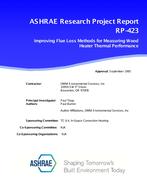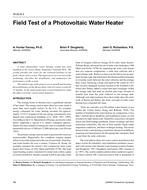Most of the water used in Kuwait comes from several co-generation plants. These plants use the waste heat from the electrical power generation cycle to heat the seawater fed to multistage flash (MSF) desalination units, which produce highly purified water with total dissolved solids (TDS) of less than 50 ppm. This kind of water is not suitable for human consumption without adding some necessary minerals to increase the TDS to about 500 ppm. Buying and adding these minerals to the MSF product water would not be cost effective, especially when this water is not meant excessively for human consumption, but for all other activities. The Ministry of Electricity and Water in Kuwait has been mixing the MSF product with 20-25% groundwater from the Sulaibiya area (TDS 4500-5500 ppm). This solution may not be sustainable as the consumption rate of the groundwater in Kuwait is currently higher than the replenishing rate based on some studies. The aim of this work is to design a reverse osmosis (RO) plant that will treat the MSF’s reject water (TDS 48000 ppm) to produce water with a TDS of around 500 ppm. The RO product water can be used as a full or partial substitute for the Sulaibiya groundwater. This is hoped to alleviate the pressure on the Sulaibiya water and consequently lead to extending its life. In this paper, we will be interested in determining the kind of the RO system, the maximum possible water production rate, and the cost per cubic meter of the produced water. The results have shown that a water recovery ratio (Rr) as high as 35% is possible at a specific water production cost of 2.04 US$/m³.
Citation: 6th International Conference on Energy Research and Development, State of Kuwait, March 14–16, 2016
Product Details
- Published:
- 2016
- Number of Pages:
- 8
- Units of Measure:
- Dual
- File Size:
- 1 file , 1.2 MB
- Product Code(s):
- D-ICER16-39


